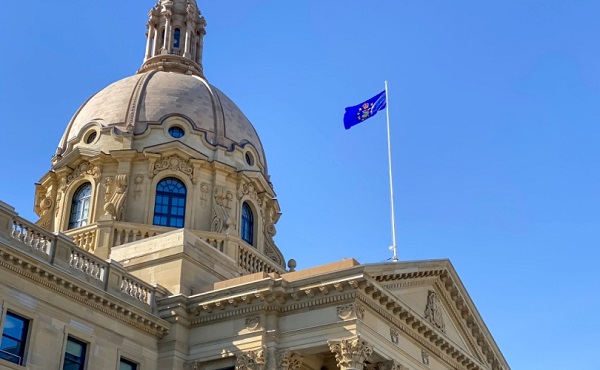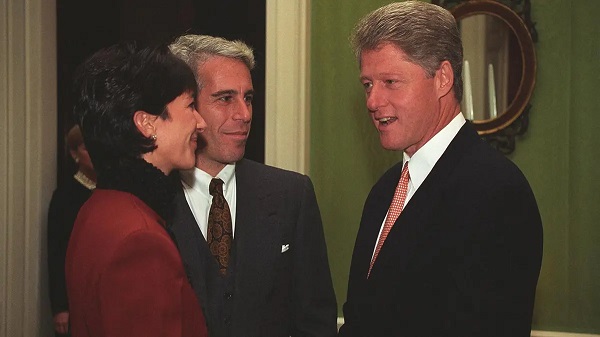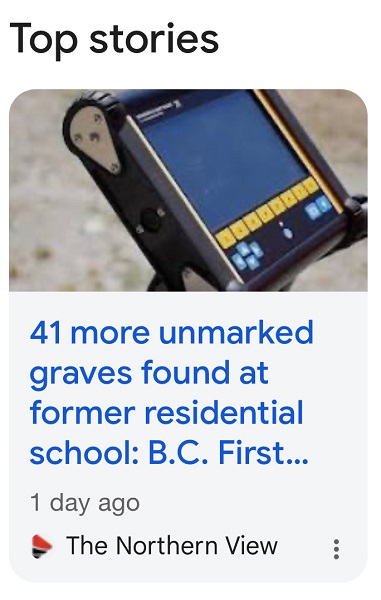Crime
U.S. Treasury Warns of $312 Billion in Chinese Laundering For Mexican cartels

FinCEN says Chinese networks moving billions for Mexican cartels also push illicit cash through U.S. real estate, elder care centers, and human trafficking schemes.
The U.S. Department of the Treasury issued a stark warning Thursday that Chinese money laundering networks have become a primary engine driving Mexico-based drug cartels’ expansion into the United States, flagging $312 billion in cartel-linked suspicious transactions and a further $53.7 billion in illicit real estate activity over the past four years. Officials underscored the systemic risks posed by what they described as a sprawling global underground economy.
While cartel laundering was the central focus, Treasury’s Financial Crimes Enforcement Network (FinCEN) also highlighted troubling evidence of Chinese-linked financial activity tied to elder care centers, human trafficking, and fraud. Investigators flagged $766 million in suspicious activity at 83 adult and senior day care centers in New York, along with 1,675 reports of suspected human trafficking or smuggling, and 108 reports tied to elder abuse and health care schemes.
New York has been the focus of investigations showing how Chinese community groups and service centers became entangled in Beijing’s foreign interference campaigns, according to indictments and reporting in The New York Times—raising concerns that the financial networks flagged by FinCEN blur the line between criminal enterprises and hostile state activities.
As reported previously by The Bureau in coverage of a sweeping FinTRAC warning on Chinese underground banking in Toronto, FinCEN is now raising similar alarms. The Treasury said so-called “money mules” often rely on falsified jobs and identities to gain access to the banking system, disguise unexplained wealth, and buy residential properties. In cases where these mules opened accounts, they frequently listed occupations such as “student,” “housewife,” “retired,” or “laborer” — roles that would not normally involve large volumes of financial activity — yet the accounts showed high-value deposits and transactions consistent with laundering.
These same evasive patterns first appeared in audits during the 2010s of massive drug-money laundering through British Columbia’s government casinos, a dominant node of Chinese triad and state activity in North America. According to FinTRAC, Chinese criminal networks shifted the scheme across Canada’s banking and legal systems during the pandemic, when casino closures forced an evolution of laundering tactics.
In the United States, Treasury officials said, these networks have become critical partners to Latin American drug cartels — including groups designated as foreign terrorist organizations.
“Money laundering networks linked to individual passport holders from the People’s Republic of China enable cartels to poison Americans with fentanyl, conduct human trafficking, and wreak havoc among communities across our great nation,” said John K. Hurley, Treasury’s Under Secretary for Terrorism and Financial Intelligence. “The United States will not stand by and allow nefarious actors to launder illicit proceeds through our financial system.”
FinCEN Director Andrea Gacki called the networks “global and pervasive,” warning that they must be “dismantled” through coordinated international action.
The Financial Trend Analysis behind the advisory drew on 137,153 Bank Secrecy Act reports filed between January 2020 and December 2024, documenting $312 billion in suspicious transactions tied to Chinese laundering networks.
Officials described a vast shadow infrastructure stretching from cartel couriers in the United States and Mexico to Chinese nationals seeking to evade Beijing’s strict capital controls. The result is a mutually beneficial pipeline: cartels desperate to shed bulk U.S. dollars sell cash to Chinese intermediaries, who in turn profit by reselling those dollars to wealthy clients inside China eager to move money abroad.
Chinese Command Cartel Money Movement
A granular view of the scheme emerged in the stunning case of Beijing-born Zhi Dong Zhang — code-named “Chino” — who, as The Bureau reported this week, recently escaped house arrest in Mexico City just days before his scheduled extradition to the United States. Indictments allege Zhang commanded both the Chinese and Mexican wings of cartel operations, training Hispanic money mules to infiltrate U.S. banks. He reportedly bridged fentanyl precursor supply lines for the rival Sinaloa and Jalisco cartels — a rare position that underscored how Chinese networks have become the anchor of cartel financial and chemical infrastructure.
The global, trade-based nature of the system — emphasized in Treasury officials’ comments — stems from Mexico’s restrictions on dollar deposits and China’s caps on outbound transfers. Together, these measures have forged what Treasury calls a “mutualistic relationship” between cartels and Chinese brokers. Cartel proceeds in U.S. dollars are sold at a discount to Chinese laundering networks, which in turn meet demand from Chinese citizens and businesses seeking dollars for tuition, real estate, or investments in the United States.
Transactions move through informal networks advertised on WeChat or brokered via personal connections. Cartels are then compensated in yuan through Chinese accounts or with goods purchased in Asia and shipped to Mexico through their diaspora distribution channels.
In some cases, financial institution employees are recruited as complicit insiders, while counterfeit Chinese passports have been used to open accounts and disguise flows. The layering of shell companies, third-party intermediaries, and complex real estate purchases allows illicit proceeds to be reintegrated into the legitimate economy.
As previously reported by The Bureau, the U.S. government has been surfacing vast datasets and cases tied to an ongoing DEA task force codenamed Sleeping Giant. The operation was launched by senior DEA agent Don Im, whose career has focused on decoding China’s central role in global money laundering and chemical supply chains for methamphetamine and fentanyl. The mission was designed to bring cases against Latin American cartels working in partnership with Chinese laundering syndicates.
One of the task force’s major cases revealed how Sai Zhang, a Chinese student in California on a study visa, played a commanding role in orchestrating Sinaloa cartel fentanyl cash flows. But the system extended far beyond one trafficker, Im said, bridging into the architecture of China’s economic system itself.
“Chinese banking networks were operating in the U.S. long before Zhang linked up with the Sinaloa cartel,” Im told The Bureau in a report that previewed FinCEN’s detailed findings. He described how Chinese buyers bid on pools of cartel drug cash collected worldwide, paying a premium to receive laundered dollars in U.S. cities and investments of their choosing. “The buyers were mostly wealthy Chinese seeking dollars for real estate or tuition in America. Payments were made in yuan through Chinese accounts. In return, Mexican cartels received goods or cash.”

In exclusive interviews, Im outlined in unprecedented detail the breathtaking complexity of China’s global drug money laundering networks — a labyrinth of shadow transactions that Sleeping Giant helped map and penetrate. These findings, he said, help explain why Washington is now imposing new trade sanctions targeting China and countries bound tightly to its export-driven economy.
At the heart of the problem, according to Im, is Beijing’s decentralized economic apparatus. The Chinese Communist Party’s regional governors knowingly align with drug barons, he argued — channeling fentanyl cash, reintegrating it into China’s industrial output, and exporting drug-funded goods worldwide. Meanwhile, Chinese immigrants and travelers access the other side of this narco-banking system, using it to bankroll overseas investments and strengthen the reach of the Chinese diaspora.
The new Treasury advisory urges financial institutions to sharpen detection of red flags, from unusual cash deposits and wire transfers tied to Chinese nationals to trade transactions routed through shell companies and real estate purchases inconsistent with reported income. Officials cast the move as part of a whole-of-government campaign to choke off cartel financing while pressing for tighter coordination with foreign governments and law enforcement partners.
“Chinese money laundering networks are global and pervasive, and they must be dismantled,” Gacki said.
One senior U.S. expert, in a previous interview, warned that diligent business leaders in the United States — and worldwide — would be wise to study such sweeping warnings, or risk penalties for complicity in terror-designated cartel financing if they fail to implement proper controls and oversight of suspicious transactions.
Crime
Police Say Victim Drugged, Kidnapped From Alberta in B.C. Human Trafficking and Cocaine Dealing Network

The cash sought by British Columbia’s high-profile Civil Forfeiture Office is relatively small in a case filed Tuesday, but the alleged crimes behind the proceeds—cross-province human trafficking, forcible confinement, procuring, and drug trafficking—point to a well-connected national network with access to cocaine from Mexican suppliers.
Gabriel Angel Osorio-Interiano, 27, a Montreal man previously charged in 2017 for a violent casino-district hotel robbery in Niagara Falls with three other young Montrealers, is now accused in Surrey of kidnapping a victim from Alberta, supplying her cocaine, and forcing her to service a client, according to Surrey Police.
Court filings obtained by The Bureau show the Director of Civil Forfeiture filed a claim this week against $5,625 in cash seized by police on March 21, 2025. The money—some of it contaminated with drug residue—was found in a wallet and bedroom drawer belonging to Osorio-Interiano at a high-rise apartment in Surrey’s Central City.
Despite the modest sum, the case underscores the reach of British Columbia’s civil forfeiture regime, which has often moved against assets tied to organized crime and money laundering where criminal charges prove difficult to sustain.
Law-enforcement experts in both Canada and the United States say domestic Canadian gangs have in recent years been moving massive volumes of cocaine from Mexico into British Columbia, Alberta, Ontario, and Montreal via commercial trucking routes. As Canada’s drug markets tighten their links with Mexican cartels, the country’s justice system remains ill-equipped to prosecute sophisticated transnational networks—leaving civil forfeiture as one of the few tools available to disrupt them.
In the Niagara Falls case, Osorio-Interiano, along with Sergio Hernandez-Cruz and Samuel Osorio, was charged after a hotel room in the casino district was forced open, the occupant allegedly violently assaulted, and belongings stolen before the suspects fled on foot. All were released with conditions, and Montreal police assisted the Niagara Falls force.
The new British Columbia civil forfeiture claim alleges that between March 19 and 20, 2025, Gabriel Osorio-Interiano and unidentified associates carried out forcible confinement, human trafficking, and drug trafficking inside a high-rise apartment at 13308 Central Avenue in Surrey. Police say a victim from Alberta escaped the unit and reported she had been kidnapped, given cocaine, and locked inside. She told investigators she was ordered to service a “date” in the apartment and, after being paid by a client, was forced to hand over part of her earnings to Osorio-Interiano and his associates.
When officers moved in on the residence, a blue bag containing 756 grams of cocaine was allegedly hurled from the balcony. Police then arrested Osorio-Interiano and others for kidnapping.
A search of the residence turned up a series of items that police say tie Osorio-Interiano directly to both the apartment and the alleged trafficking operation. Officers counted $2,125 in Canadian currency inside his wallet and another $3,500 hidden in a bedroom drawer—the cash now at the center of the civil forfeiture case. They also discovered $3,100 in a wallet belonging to one of his associates, though that sum was not included in the proceedings.
Investigators seized documents in Osorio-Interiano’s name, including the tenancy agreement for the unit, along with fraudulent identification cards bearing his likeness. They also found drug paraphernalia—a digital scale marked with residue and packaging materials—together with cash contaminated by narcotics, evidence police say points to active distribution.
Officers further recovered personal belongings of the victim, and a handwritten journal that logged dates, payments, and rates for escort services.
“The Money has been used by G. Osorio-Interiano to engage in unlawful activities which variously resulted in, or were likely to result in, the acquisition of property or an interest in property, or caused, or could have resulted in serious bodily harm,” the seizure filings argue.
Business
B.C. Lottery Corp Fined $1M in First Casino Laundering Case Since Cullen Report

BCLC appeals, reviving “linguistic and cultural” defenses as Eby’s government leaves Cullen’s reforms largely unfulfilled
Canada’s financial intelligence agency has hit the British Columbia Lottery Corporation with a $1.075-million penalty for failing to report suspicious transactions and monitor high-risk high-rollers — the first major suspected money-laundering case against the province’s casino arm since the Cullen Commission, whose more than 100 recommendations remain largely ignored by Premier David Eby’s government.
The case centers on BCLC’s failure to report suspicious cash transactions tied to a particular “high-risk” gambler, as well as its failure to maintain adequate compliance measures for such cases.
The provincial Crown corporation has appealed the decision in Federal Court, reportedly contending that Fintrac failed to consider whether the gambler’s “perceived uncooperativeness and inconsistencies arose from linguistic and cultural differences.”
This line of defense reflects a familiar refrain from the province’s casino administration: pushing back on audits and regulatory findings by pointing to cultural practices around gambling, especially large cash “buy-ins” by wealthy visitors from China.
The documents state that Fintrac examiners judged a patron to be evasive and at times dishonest, providing false or misleading information about their occupation and ownership of property.
Such gaps in vetting patrons echo a major vulnerability identified by the Cullen Commission.
But BCLC argues that in this case the perceived inconsistencies may have stemmed from language barriers and cultural context. The appeal reportedly specifies that the regulator neglected to take into account the patron’s English-language skills or the country from which they emigrated.
BCLC has a history of resisting anti-money-laundering enforcement. In 2010, it contested a $695,750 penalty, successfully securing its cancellation via a Federal Court consent order.
That judgment was followed by exponential increases in “Vancouver Model” laundering — which peaked with more than $1.2 billion in suspicious cash transactions in 2014, according to Commissioner Austin Cullen’s 2022 final report.
Fintrac’s July 17, 2025 decision cites three violations under the Proceeds of Crime (Money Laundering) and Terrorist Financing Act. BCLC failed to submit two suspicious transaction reports despite “reasonable grounds to suspect” that a high-volume patron’s play was linked to money laundering or terrorist financing. Fintrac’s examiners noted gaps in the corporation’s enhanced due diligence reviews and identified multiple laundering indicators that were overlooked. The regulator also found that BCLC failed to keep its compliance policies up to date and approved by senior officers, and lacked documented procedures for identifying high-risk patrons.
The latest penalty comes against the backdrop of the Cullen Commission’s scathing 2022 report, which catalogued how billions in drug-linked cash flowed unchecked through B.C. casinos, real estate, and luxury markets. Cullen issued 101 recommendations, calling for sweeping reforms to break the province’s dependence on illicit capital. Yet more than three years later, only a handful of recommendations have been implemented by the Eby government. The most urgent — Cullen’s call for an independent Anti-Money Laundering Commissioner to oversee the provincial response — underscores the vulnerabilities exposed by BCLC’s latest alleged failing.
“The only way to reverse the state of affairs is to vest with one office the responsibility to support, oversee, and monitor the provincial response to money laundering,” Cullen wrote.
One particular set of data from the Commission’s final report illustrates how integral Chinese underground banks were to B.C. casino operations, and how easily gangsters accessed government-regulated financial sites. “In 2014 alone, British Columbia casinos accepted nearly $1.2 billion in cash transactions of $10,000 or more, including 1,881 individual cash buy-ins of $100,000 or more,” Cullen’s report said. That means that in 2014, almost 2,000 times, a gambler was allowed to walk into a B.C. government casino carrying at least $100,000 in cash and buy casino chips. In almost all cases these were gamblers who traveled from China or gangsters who facilitated them. “In addition to the extraordinary amounts, the cash used in many of these transactions exhibited well-known characteristics of cash derived from crime,” Cullen’s June 2022 report added.
Documents obtained by The Bureau in 2023 revealed that the RCMP’s internal response to the Commission — dubbed Project Neutralize — was not aimed at cracking down on laundering, but rather at blunting the Commission’s damaging findings. Records showed federal police sought to negate criticism that the force had failed to investigate the unprecedented surge of Chinese underground banking and cartel cash in B.C. casinos.
-

 Business2 days ago
Business2 days agoCracker Barrel and the Power of Conservative Boycotts
-

 Business1 day ago
Business1 day agoAll of B.C. now subject to ‘Aboriginal title’ claims
-

 Business4 hours ago
Business4 hours agoBigger Government, Bigger Bill: PBO reveals $71.1 billion in federal personnel spending in 2024–25
-

 Business1 day ago
Business1 day agoB.C. Lottery Corp Fined $1M in First Casino Laundering Case Since Cullen Report
-

 Alberta1 day ago
Alberta1 day agoAlberta deficit projected to hit 6.5 billion – up 1.3 billion after first quarter
-

 Alberta3 hours ago
Alberta3 hours agoAlberta’s fiscal update—and $6.5 billion deficit—underscores need for spending reductions
-

 Business1 day ago
Business1 day agoCarney’s tariff blunder cost you at the checkout
-

 Business1 day ago
Business1 day agoNew PBO report highlights the cost of ballooning bureaucracy









